Today my goal was to reach the Bear River Migratory Bird Refuge in Utah. It was my third visit here and I was anxious to see if there had been any changes made while I was gone. You know that this is a federally funded, federally managed, tax dollar supported organization under the strict control of the Federal Government, who rigidly sets the standards by which it is run and although occasionally there are errors that severely impact the users, they are here to help you. Wait… that ‘s the IRS. I meant to say that this is a wonderful place run by the state of Utah and free to the public. It caters to birds of all types without thought of race, creed or color. 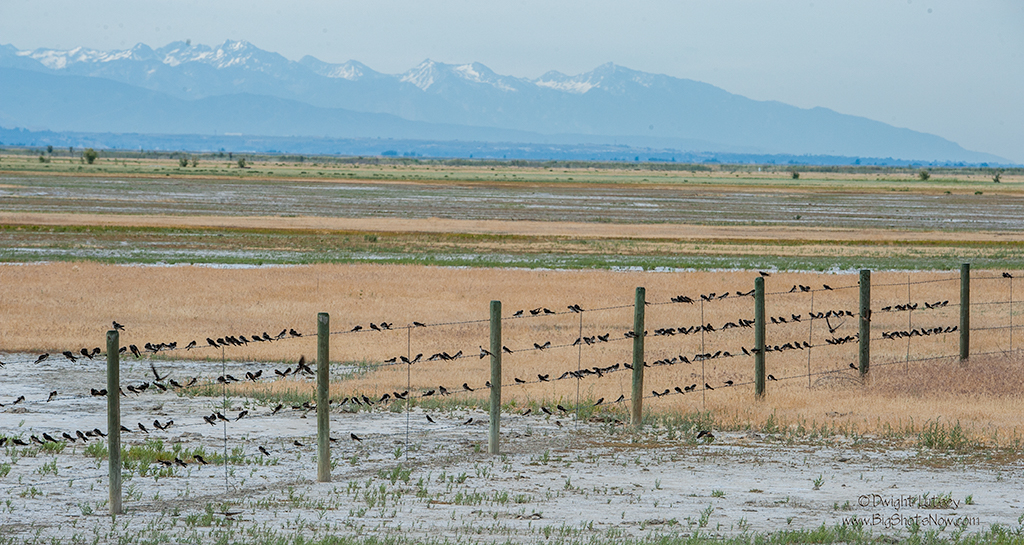 Having said that I must point out that this is a managed refuge and there are regulations in place to make this a better place for both birds, and the people that watch them. In this case there has been and ongoing problem with undocumented birds using and abusing the system. Consequently the powers that be thought it would be prudent to build a fence to limit the number of users that can be in the park at any one time. One of the most abusive groups that need to be managed are the Canadian Barn Swallows, a raucous but law-abiding group shown here waiting for their permits to be issued before they can enter the refuge and abuse it. They will line up on this fence for miles squawking and ruffling their feathers demanding that the fence be taken down and they be granted full use privileges. so far their demands have not been met.
Having said that I must point out that this is a managed refuge and there are regulations in place to make this a better place for both birds, and the people that watch them. In this case there has been and ongoing problem with undocumented birds using and abusing the system. Consequently the powers that be thought it would be prudent to build a fence to limit the number of users that can be in the park at any one time. One of the most abusive groups that need to be managed are the Canadian Barn Swallows, a raucous but law-abiding group shown here waiting for their permits to be issued before they can enter the refuge and abuse it. They will line up on this fence for miles squawking and ruffling their feathers demanding that the fence be taken down and they be granted full use privileges. so far their demands have not been met. 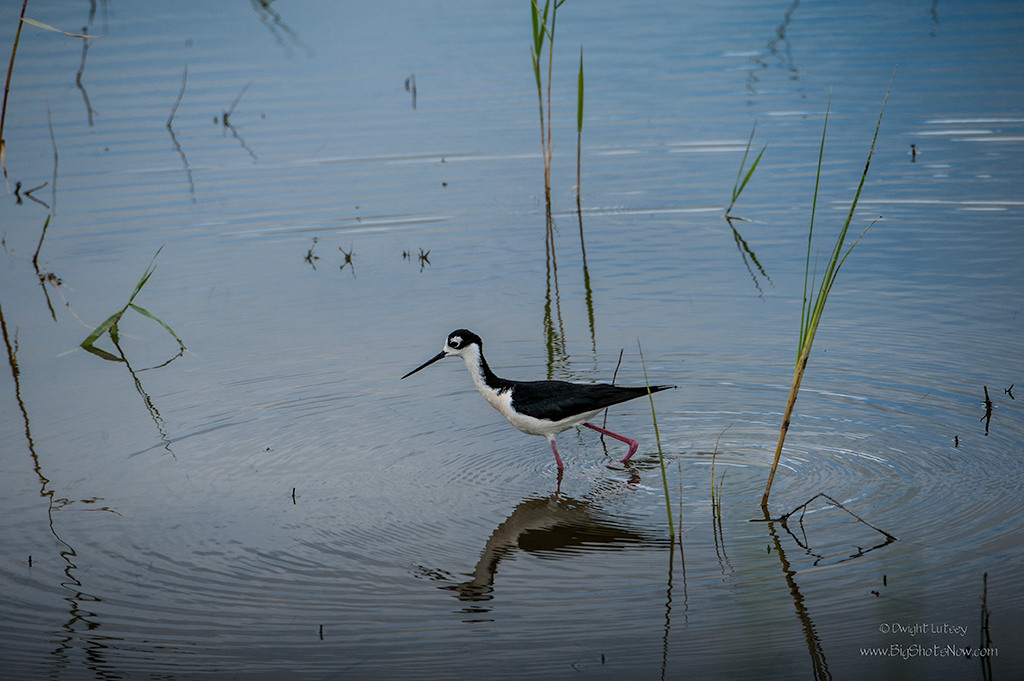 To better inform the public about birds and bird related species, each week the refuge chooses one bird to feature. The bird of the week this week is the Black-Necked Stilt, a largish shore bird closely related to the Not-So-Black-necked Stilt or as it is colloquially known here, the Grey-necked Stilt. It eats small stuff that it finds in the water, roots and berries and lasagna. It’s call is a soothing “HeyyyyyyyyyyWhatttttttsForDinnnnnner” followed by a chkk-chhkkk-charump. This week the refuge is absolutely saturated with them.
To better inform the public about birds and bird related species, each week the refuge chooses one bird to feature. The bird of the week this week is the Black-Necked Stilt, a largish shore bird closely related to the Not-So-Black-necked Stilt or as it is colloquially known here, the Grey-necked Stilt. It eats small stuff that it finds in the water, roots and berries and lasagna. It’s call is a soothing “HeyyyyyyyyyyWhatttttttsForDinnnnnner” followed by a chkk-chhkkk-charump. This week the refuge is absolutely saturated with them. 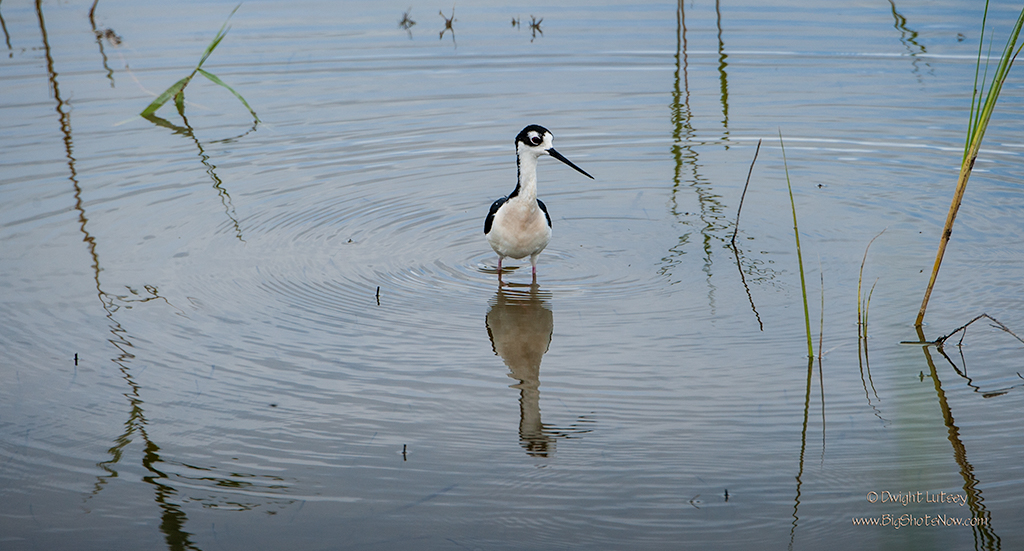 The typical Black-necked Stilt has many personalities. This one reminds me of that guy you see at the fairgrounds, you know that guy, the one just standing there with his hands In his pockets looking around. Probably waiting for his wife or maybe for the kids to get off the Tilt-A-Whirl. He’s there because the kids like it and his wife can shop the booths along the midway. He’d rather be home sitting in his chair with a beer watching Wild Kingdom or Birds in Flight or something on the box. He could be a moult inspector or have some kind of 8-5 job and this is how he spends the week-ends. Basically a good guy.
The typical Black-necked Stilt has many personalities. This one reminds me of that guy you see at the fairgrounds, you know that guy, the one just standing there with his hands In his pockets looking around. Probably waiting for his wife or maybe for the kids to get off the Tilt-A-Whirl. He’s there because the kids like it and his wife can shop the booths along the midway. He’d rather be home sitting in his chair with a beer watching Wild Kingdom or Birds in Flight or something on the box. He could be a moult inspector or have some kind of 8-5 job and this is how he spends the week-ends. Basically a good guy. 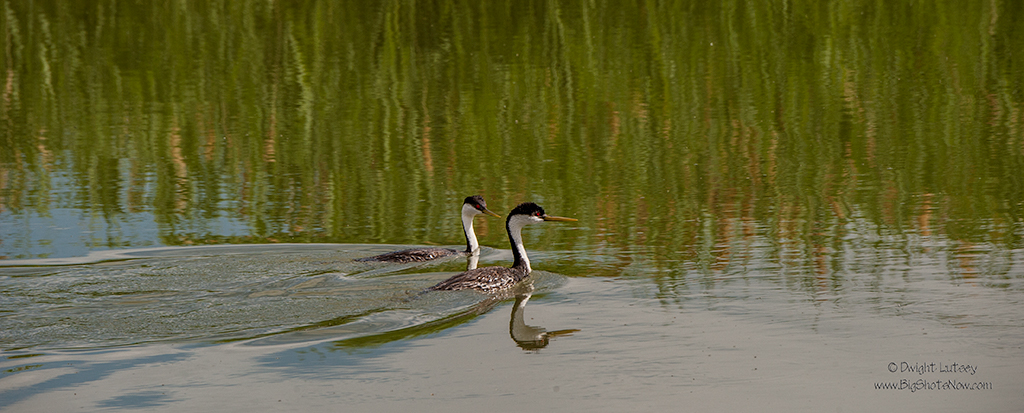 This is another kind of bird. They’re Grebe’s, there’s about a dozen different kind. This is this kind. They swim around, eat stuff, get married, have kids, and winter in the warmer parts of wherever. One is the male and the other is the female. I know, they kind a look a like, the way old people who have lived together for 70-80 years do.
This is another kind of bird. They’re Grebe’s, there’s about a dozen different kind. This is this kind. They swim around, eat stuff, get married, have kids, and winter in the warmer parts of wherever. One is the male and the other is the female. I know, they kind a look a like, the way old people who have lived together for 70-80 years do. 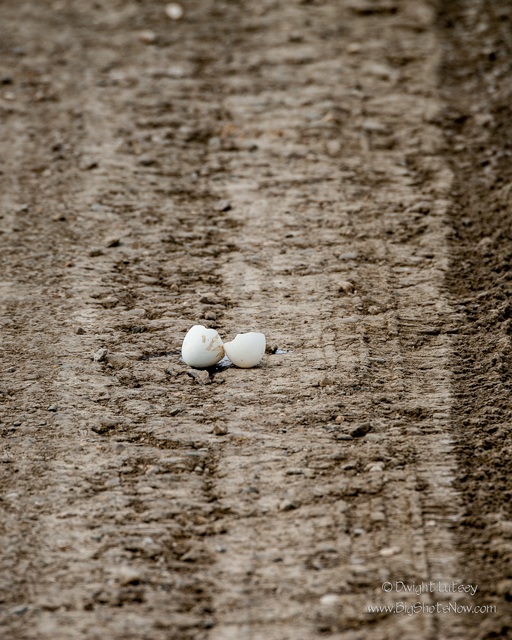 This might be a Grebe Egg. Their numbers are diminishing because they’re too lazy to build nests and lay their eggs instead in the middle of the road where dump trucks drive back and forth and you can see what happens. In doing the forensic work on this egg we determined that the egg fits perfectly between the spaces of the lugs in the dump truck tire and as the truck drove over the egg it broke it, but didn’t crush it. It is entirely possible that the chick was stuck between the lugs and after a certain number of tire revolutions was thrown free, dizzy but intact. Whether the youngster was ever reunited with the adults is unknown. Apparently Grebes have short memories and may have even forgot they laid this egg. There is talk of limiting dump truck travel in Utah during the Grebe breeding season but so far there has been no action in the Utah legislature.
This might be a Grebe Egg. Their numbers are diminishing because they’re too lazy to build nests and lay their eggs instead in the middle of the road where dump trucks drive back and forth and you can see what happens. In doing the forensic work on this egg we determined that the egg fits perfectly between the spaces of the lugs in the dump truck tire and as the truck drove over the egg it broke it, but didn’t crush it. It is entirely possible that the chick was stuck between the lugs and after a certain number of tire revolutions was thrown free, dizzy but intact. Whether the youngster was ever reunited with the adults is unknown. Apparently Grebes have short memories and may have even forgot they laid this egg. There is talk of limiting dump truck travel in Utah during the Grebe breeding season but so far there has been no action in the Utah legislature. 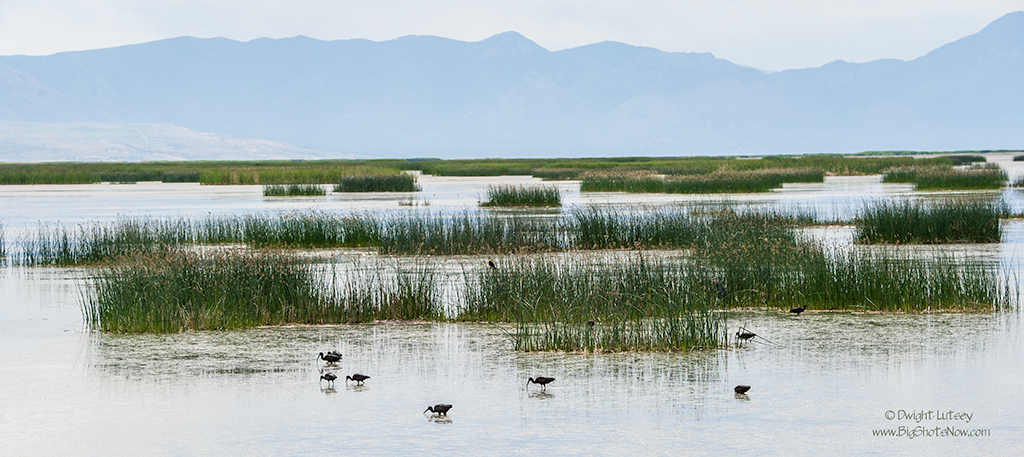 Lest you get the impression that life is harsh in a forbidding setting I want to reassure you that t here is beauty here too. This is the White-faced Ibis shallows where you see the calm serenity that can be found here on alternate Thursdays.
Lest you get the impression that life is harsh in a forbidding setting I want to reassure you that t here is beauty here too. This is the White-faced Ibis shallows where you see the calm serenity that can be found here on alternate Thursdays. 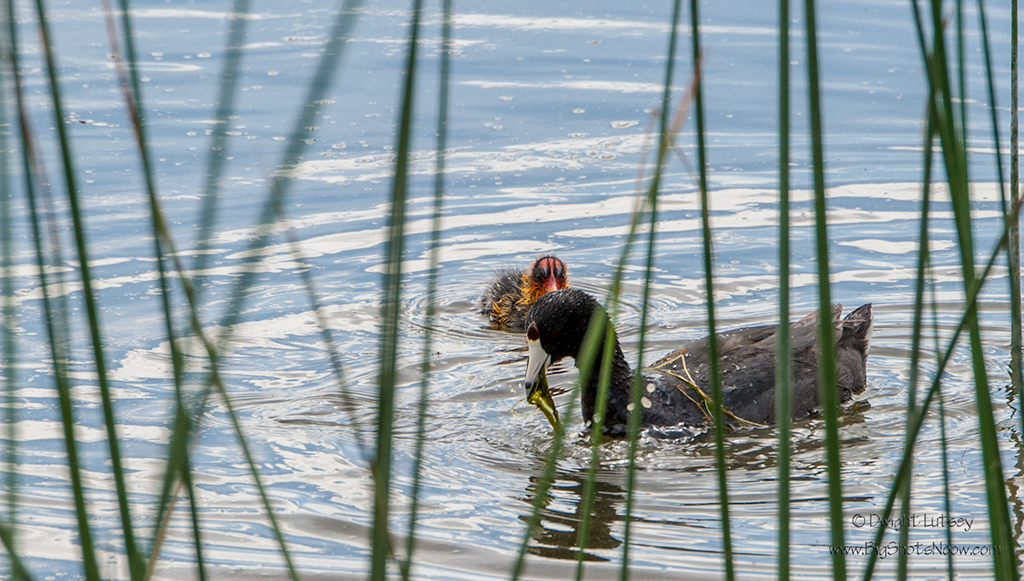 Of course in a place as large and diverse as this refuge is, you can always find diversity amongst the flocks. This is the melting pot of Birdland as it were, and anything is possible in a biological way. Apparently there was a large meet and greet and a Jamaican oil-drum steel band was playing there and this young but naïve coot spent some time with the parrot who played lead drum and later as will happen, she was blessed with several chicks who seemingly took after their father. There are no value judgments here, after all this is nature, and there is no right or wrong in nature.
Of course in a place as large and diverse as this refuge is, you can always find diversity amongst the flocks. This is the melting pot of Birdland as it were, and anything is possible in a biological way. Apparently there was a large meet and greet and a Jamaican oil-drum steel band was playing there and this young but naïve coot spent some time with the parrot who played lead drum and later as will happen, she was blessed with several chicks who seemingly took after their father. There are no value judgments here, after all this is nature, and there is no right or wrong in nature. 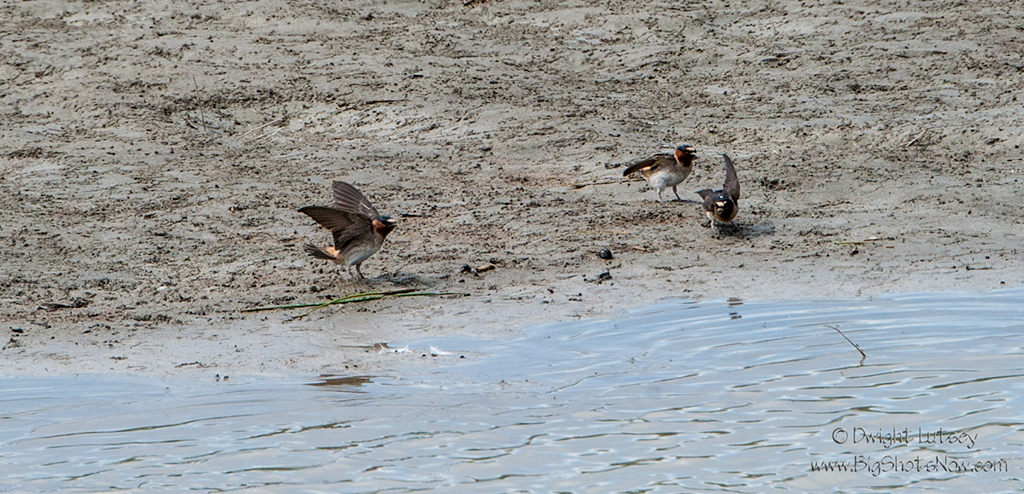 Remember we talked earlier of the quota system being imposed on certain species of birds, well this is why. This is a distinct sub-group of the Canadian Barn Swallow, the Mud-Pluckers as they’re known, and their abusive use of the resources here at Bear River Migratory Bird Refuge. They are the primary reason sanctions are being imposed on these birds. Here they are caught red-handed, plucking mud out of the shoreline and flying off with it. Thousands, if not a bunch of thousands, of these mud stealing little birds have been depleting the shore line of its life-sustaining mud and disappearing. No one knows why. Mud just disappears, one beak full at a time. It is thought that the ponds and rivers in the refuge have been lowered by as much as 16 feet by the constant, continuous excavation of the shoreline by these Mud-Pluckers. If this isn’t reversed we may see nothing but giant sinkholes with a little water a the bottom. What’ll happen then, eh? We may have to stop these birds at the border. I don’t even want to think of what that might do to the already shaky relationship we have with our mud less neighbors to the North.
Remember we talked earlier of the quota system being imposed on certain species of birds, well this is why. This is a distinct sub-group of the Canadian Barn Swallow, the Mud-Pluckers as they’re known, and their abusive use of the resources here at Bear River Migratory Bird Refuge. They are the primary reason sanctions are being imposed on these birds. Here they are caught red-handed, plucking mud out of the shoreline and flying off with it. Thousands, if not a bunch of thousands, of these mud stealing little birds have been depleting the shore line of its life-sustaining mud and disappearing. No one knows why. Mud just disappears, one beak full at a time. It is thought that the ponds and rivers in the refuge have been lowered by as much as 16 feet by the constant, continuous excavation of the shoreline by these Mud-Pluckers. If this isn’t reversed we may see nothing but giant sinkholes with a little water a the bottom. What’ll happen then, eh? We may have to stop these birds at the border. I don’t even want to think of what that might do to the already shaky relationship we have with our mud less neighbors to the North.  Even after showing the dark side of the refuge it is still a hauntingly beautiful place. If you have any interest in birds or nature or life in general you must visit. If you don’t, nevermind, it’s just a flat place with some ponds, a ditch or two, and a lot of mosquitos, in fact I heard there’s a good movie playing down at the multiplex you should check it out. But if you are one of those who revel in nature and all that she has to offer, then you’re in luck, because the Bear River Migratory Bird Refuge is just down the road in Utah. See you there next time. Tomorrow I point The Bokeh Maru homeward and back to civilization as we know it.
Even after showing the dark side of the refuge it is still a hauntingly beautiful place. If you have any interest in birds or nature or life in general you must visit. If you don’t, nevermind, it’s just a flat place with some ponds, a ditch or two, and a lot of mosquitos, in fact I heard there’s a good movie playing down at the multiplex you should check it out. But if you are one of those who revel in nature and all that she has to offer, then you’re in luck, because the Bear River Migratory Bird Refuge is just down the road in Utah. See you there next time. Tomorrow I point The Bokeh Maru homeward and back to civilization as we know it.
The Maiden Voyage of the Bokeh Maru – Day 13
I must go down to the roads again, to the lonely sea and the sky,
And all I ask is the Bokeh Maru and a star to steer her by;
And the wheel’s kick and the wind’s song and the white sail’s shaking,
And a grey mist on the roads I face, and a grey dawn breaking,
See you tomorrow .

You must be logged in to post a comment.